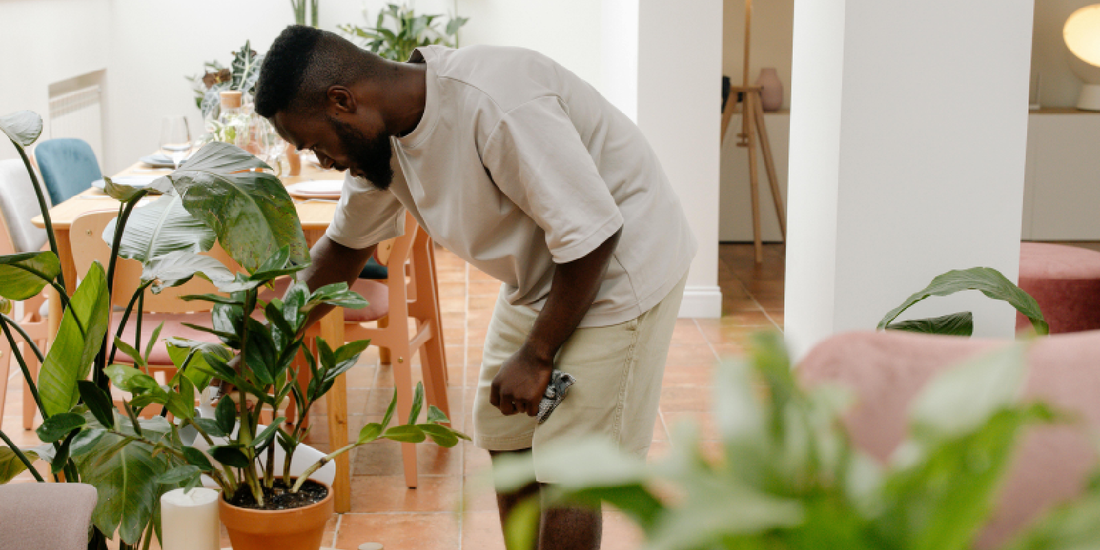
How to Pack and Move Your Indoor Garden
Share
Moving to a new home is always a big event, filled with anticipation, stress, and endless to-do lists. For indoor gardeners, however, the challenge multiplies. Unlike furniture or electronics, plants are living companions that require continuous care. They don’t just need to be carried from one place to another—they need to be transported in a way that preserves their health, their structure, and their environment.
If you’ve built a thriving indoor garden, moving can feel intimidating. Will your plants survive the journey? How do you dismantle your grow lights and shelves? What about temperature swings or limited space in a moving truck? The good news: with preparation and patience, your indoor jungle can arrive safely and flourish again in your new space.
In this ultimate guide, we’ll cover everything you need to know about packing, transporting, and re-establishing your indoor garden. Whether you’re a casual plant parent with a few succulents or a dedicated enthusiast with a full amoyls VerdantGlow S-Shaped 8-Tier Plant Shelf with Grow Lights, these strategies will make the process smoother, safer, and less stressful for both you and your plants.
Why Plants Need Special Care During a Move
Plants are more fragile than most household belongings. They depend on a consistent cycle of light, water, humidity, and temperature. During a move, each of those factors can be disrupted:
- A truck ride may mean hours without sunlight.
- Sudden exposure to cold or heat can shock sensitive foliage.
- Shaking and bumps can spill soil, break stems, or even crack pots.
- Prolonged darkness in sealed boxes may stress photosynthetic cycles.
Recognizing these risks is the first step to preventing them. Unlike books or chairs, plants require active planning to endure relocation. By treating your plants as “living passengers,” you’ll approach the move with a mindset of protection, not just transportation.
Step 1: Evaluate and Prepare Your Indoor Garden
Take Inventory
Begin by listing all of your plants. Include details such as:
- Size and weight – Tall palms or heavy ceramic pots require different handling than small succulents.
- Care needs – Some plants tolerate stress better (snake plants, pothos) while others are fragile (orchids, ferns).
- Value – Prioritize rare, expensive, or sentimental plants.
This inventory helps you decide which plants are worth transporting and how much space you’ll need.
Clean and Prune
Moving is an opportunity to tidy up. Remove yellowing leaves, prune excessive growth, and clean foliage with a damp cloth. Healthy plants endure travel better. Pruning also reduces volume, making packing easier.
Pest Check
Inspect soil and leaves for pests. Moving can spread infestations quickly if you’re not careful. If necessary, treat with organic insecticidal soap a week before moving.
Step 2: Plan Your Timing
Timing matters almost as much as technique.
- Seasonal considerations: In summer, avoid leaving plants in a hot vehicle. In winter, insulate against frost. Spring and fall are generally easiest for moving greenery.
- Watering schedule: Water your plants two days before the move. The soil should be slightly moist but not soggy. Overwatering before transport risks leaks and root rot.
- Travel length: Short local moves require minimal preparation, but long interstate moves demand more robust packing and possibly temporary housing for plants.
Step 3: Prepare Pots and Soil
Secure the Soil
Loose soil is a recipe for mess. Cover the top of each pot with newspaper, stretch film, or even coffee filters secured with string. This prevents soil from spilling when the pot tilts.
Repot Heavy Containers
If you have large plants in ceramic or clay pots, consider repotting them into lightweight plastic containers several weeks before moving. This reduces both weight and breakage risk. Keep the original decorative pots separate for replanting after the move.
Group Small Plants
For succulents, herbs, and seedlings, place several pots in shallow trays or boxes. Fill gaps with crumpled newspaper to keep them stable.
Step 4: Pack Plants Safely
Choose the Right Boxes
- Small and medium plants: Place in sturdy cardboard boxes lined with plastic. Punch air holes for ventilation.
- Tall plants: Use wardrobe boxes or custom crates. Cut flaps at the top to allow foliage to extend while keeping the pot secure.
Cushion and Support
Wrap fragile pots with bubble wrap or old towels. For tall plants, stake stems with bamboo sticks and soft ties. The goal is to minimize shifting during transport.
Label Clearly
Every box should be labeled “LIVE PLANTS – THIS SIDE UP.” Movers will handle them more carefully when they know the contents.
Step 5: Handle Grow Lights and Shelving
Indoor gardens often include shelves, lighting systems, and accessories that also need careful packing.
If you’re using the amoyls VerdantGlow S-Shaped 8-Tier Plant Shelf with Grow Lights, follow these steps:
- Unplug and detach the LED grow lights. Wrap cords separately to avoid tangling.
- Label each component. Use masking tape to mark tiers and shelves for faster reassembly.
- Protect the frame. Wrap the sleek S-shaped frame with moving blankets or bubble wrap to prevent scratches.
- Secure light fixtures. LED bars are slim but delicate. Wrap them individually and store in a box labeled “Fragile – Lights.”
- Keep hardware together. Place screws, brackets, and adapters in a sealed bag taped to one of the shelf parts.
A structured shelving system like VerdantGlow makes re-setup much easier—you’ll have your plants organized and lit again within hours of arriving at your new place.
Step 6: Transport Plants with Care
In a Car
The back seat is ideal. Place boxes upright, secure with seatbelts, and avoid stacking heavy items on top. Keep the car temperature comfortable.
In a Moving Truck
Position plant boxes last, near the door. This way they are unloaded first and spend less time in the dark. Never bury plants under furniture.
Short Moves
Leave plants partially uncovered to allow airflow.
Long Moves
Punch ventilation holes in boxes. Consider overnight stops in hotels—take delicate plants indoors with you rather than leaving them in a cold or hot vehicle.
Step 7: Special Considerations by Plant Type
- Succulents and cacti: Very resilient; minimal water before moving.
- Tropical foliage (philodendrons, monsteras): Sensitive to cold drafts; wrap in plastic loosely to trap humidity.
- Orchids: Avoid excessive movement; keep upright.
- Seedlings: Extremely delicate; cover trays with clear lids or plastic wrap with holes for breathing.
By tailoring packing to plant type, survival rates improve dramatically.
Step 8: Arrival and Unpacking
Unpack Immediately
Plants should not remain boxed for more than 48 hours. Unpack them as soon as possible to restore access to light.
Reassemble Shelving
Set up your VerdantGlow S-Shaped Shelf with Grow Lights first. Position it in a bright corner and reconnect the LED system. This gives plants stability and light right away.
Re-Acclimate Plants
Expect some wilting or leaf drop—it’s normal stress. Resume your normal watering schedule, but don’t overwater in an attempt to “revive” plants. Within one to two weeks, they’ll adjust to the new environment.
Step 9: Long-Term Care After the Move
Monitor for Stress
Look for signs like yellowing leaves, drooping, or dropped buds. These usually resolve with time, but persistent issues may signal pests or improper conditions.
Adjust Lighting
Your new home may have different natural light patterns. Use the VerdantGlow shelf’s grow lights to supplement dim areas or create consistent light cycles.
Restore Routine
Consistency is key. Stick to your old watering, feeding, and pruning routines to reduce further stress.
Bonus Tips for a Smooth Indoor Garden Move
- Create a travel kit: Include scissors, extra soil, spray bottle, and stakes for emergency adjustments.
- Use breathable wraps: Old pillowcases can protect leaves without suffocating them.
- Plan for pets: Keep pets away during unpacking to avoid accidents with toppled pots.
- Celebrate the new setup: Take this as a chance to reorganize, declutter, and design your dream indoor garden layout in the new home.
Conclusion: Moving With Confidence
Relocating your indoor garden is a test of patience and planning, but it doesn’t have to end in wilted leaves or broken pots. By preparing plants properly, securing their environment, and prioritizing their unpacking, you can ensure a successful transition.
The amoyls VerdantGlow S-Shaped 8-Tier Plant Shelf with Grow Lights plays a central role in this process. Its vertical design, sturdy structure, and integrated grow lighting simplify organization and speed up re-establishment in your new home. Rather than juggling mismatched shelves and lamps, you’ll have a ready-made ecosystem that can be reassembled quickly and reliably.
Your indoor garden is more than decoration—it’s a lifestyle, a passion, and a source of calm. Treat your plants like the valued companions they are, and your move will not only preserve their health but also give you the joy of watching them thrive in a fresh new space.
